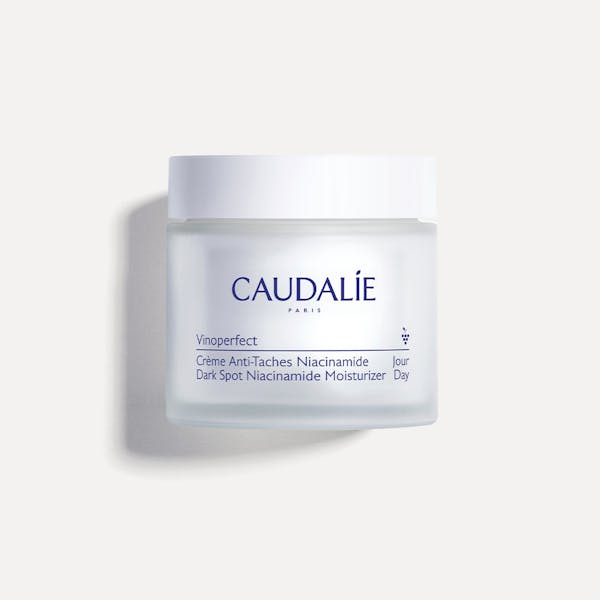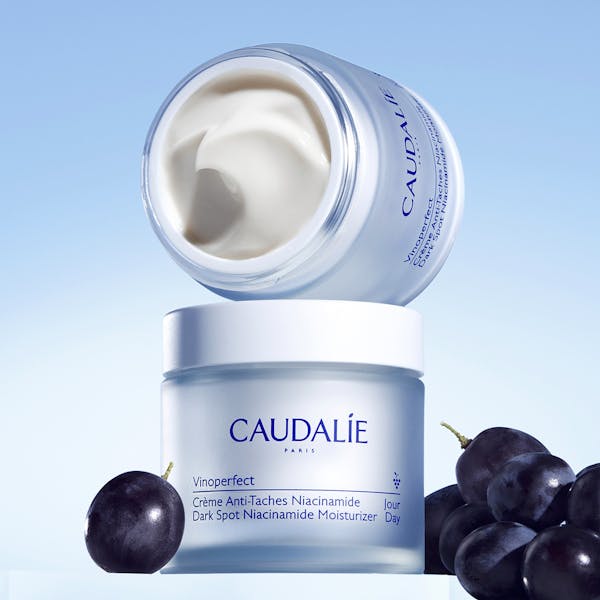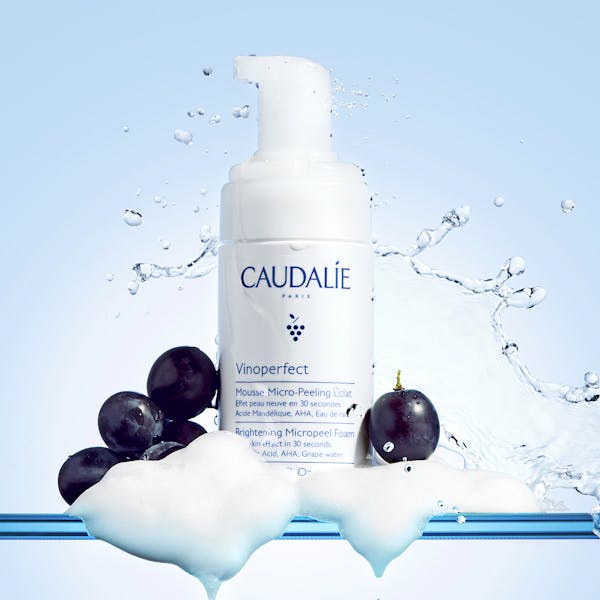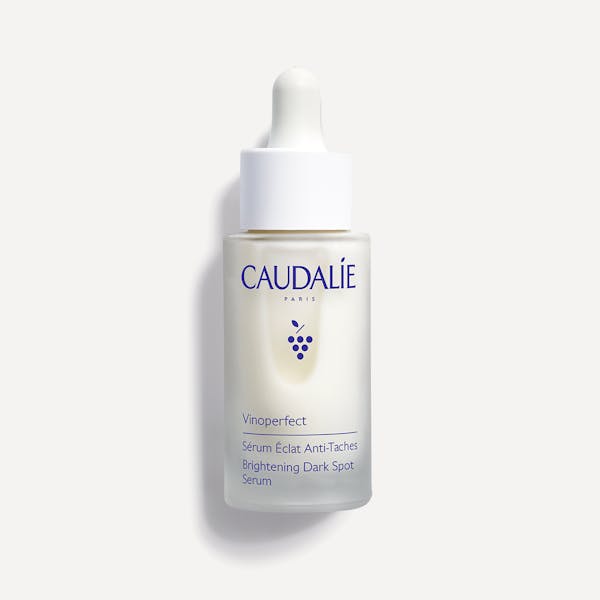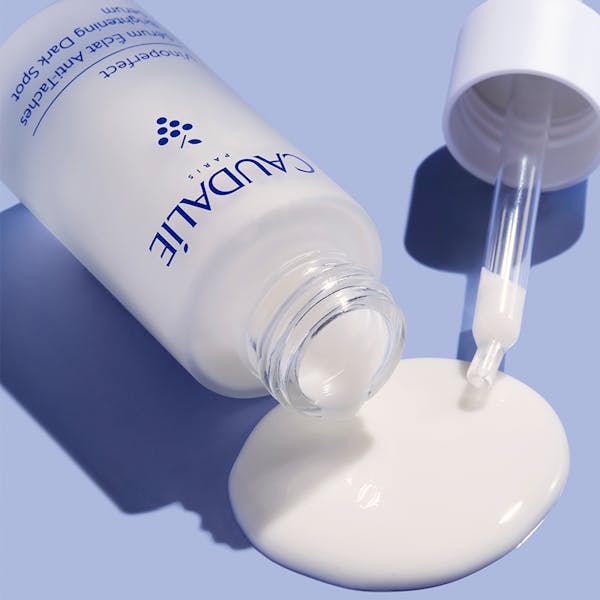Uneven skin tone can feel stubbornly persistent. Glycolic acid, an alpha hydroxy acid, works by gently exfoliating the skin’s surface, encouraging cell turnover and revealing brighter, more uniform skin. This process helps to fade dark spots and improve overall skin texture. But getting the best results means understanding how to use it properly. We’ll break down what causes hyperpigmentation, how to choose the right strength of glycolic acid, and how to use this ingredient as part of the Vinoperfect routine.
Summary
What is glycolic acid?
Glycolic acid is an alpha hydroxy acid (AHA) derived from natural sources. It’s prized in skincare for its ability to exfoliate the skin, promoting cell turnover and revealing a brighter complexion. Its small molecular size allows for deeper penetration compared to other AHAs.
Where does glycolic acid come from?
Historically, this ingredient was first extracted from sugarcane. Today, it’s also commercially produced from sources like pineapple, unripe grapes, and beetroot. Regardless of the source, the resulting glycolic acid possesses the same potent exfoliating properties.
The benefits for your skin
Glycolic acid offers a multitude of benefits, and is a key ingredient in how to get rid of hyperpigmentation:
Exfoliates dead skin cells, revealing a brighter skin.
Stimulates collagen production, improving skin firmness.
Unclogs pores, reducing breakouts.
Fades skin pigmentation, evening skin tone.
It’s a versatile ingredient suitable for a range of skin concerns. If your skin concerns persist or worsen, it’s always best to consult a dermatologist for personalized advice.
What causes uneven skin tone?
Uneven skin tone, often manifesting as patches of hyperpigmentation, is a common concern. It’s rarely a single-cause issue, but rather a confluence of factors. Understanding these triggers is the first step towards effective treatment.
How hyperpigmentation develops
Hyperpigmentation isn’t a surface-level issue; it’s a response within the skin’s melanocytes – the cells responsible for producing melanin. When these cells are triggered by factors like UV exposure, inflammation, or hormonal shifts, they produce an excess of melanin. This surplus isn’t distributed evenly, resulting in concentrated areas of darker pigmentation.
The skin’s natural process of shedding dead cells usually regulates melanin levels, but when this process is disrupted, or melanin production is excessively stimulated, hyperpigmentation becomes visible. It’s a complex biological response, not simply a cosmetic flaw.
Common types of hyperpigmentation
Here’s a breakdown of the most prevalent types:
Sunspots: caused by prolonged sun exposure, these appear as flat, brown spots.
Post-inflammatory hyperpigmentation (PIH): develops after skin inflammation, such as acne or eczema.
Melasma: often triggered by hormonal changes, such as pregnancy or birth control. It presents as larger patches, typically on the face.
Post-inflammatory hyperpigmentation: results from skin injury, like cuts, burns, or even aggressive skincare treatments.
Essentially, any disruption to the skin’s normal processes can trigger melanin overproduction, leading to unwanted discolouration. Targeting the root cause, alongside strategic ingredients, is key to restoring a balanced skin tone.
How to use glycolic acid for hyperpigmentation?
This ingredient's efficacy in addressing hyperpigmentation hinges on proper application. It’s not a one-size-fits-all solution; understanding your skin type and the specific type of hyperpigmentation is crucial.
Glycolic acid for different types of pigmentation
The approach varies depending on the cause. Sunspots respond well to consistent, moderate-strength glycolic acid use, gradually fading their appearance. PIH often requires a gentler approach, as the skin is already sensitive. Melasma is notoriously stubborn and may require professional-strength peels under dermatological supervision. Post-inflammatory hyperpigmentation benefits from a cautious, gradual introduction of this AHA, allowing the skin to heal while minimizing further irritation.
Choosing the right concentration and frequency
When incorporating this ingredient into your routine, consider products with varying concentrations. A lower concentration, suitable for daily use, can help maintain a consistent level of exfoliation. Products with a higher concentration, intended for less frequent use, provide a more intensive treatment. For example, a daily glycolic acid essence allows for gentle, continuous exfoliation, while a peel mask to apply twice a week delivers a more potent dose.
Regardless of the chosen concentration, always follow with a broad-spectrum SPF 30 or higher, as glycolic acid increases sun sensitivity. Patience is paramount; visible results typically take several weeks of consistent use.
Combination with other ingredients
Glycolic acid is a key ingredient for treating hyperpigmentation, as it gently exfoliates the skin and promotes cell turnover. When combined with niacinamide for dark spot reduction, it helps fade discoloration more effectively and restores a brighter, more even complexion.
The Vinoperfect routine for pigmentation and dark spots
The Vinoperfect range offers a complete brightening solution with Viniferine and glycolic acid working together to target dark spots and reveal luminous skin:
1. The Glycolic Acid Essence prepares the skin with a formula featuring white peony to boost radiance and illuminate the complexion, alongside organic grape water for hydration and a soothing, antioxidant effect, and glycolic acid to gently eliminate dead skin cells.
2. Next, the Dark Spot Serum for Radiance features olive squalane to moisturize and soothe the skin, alongside Viniferine for exceptional dark spot correction.
3. The Instant Brightening Moisturizer then delivers a powerful dose of Viniferine, a patented Caudalie ingredient derived from vine sap proven to be 62 times* more effective than vitamin C in correcting dark spots, combined with niacinamides to diminish enlarged pores and soothe skin, and organic grape water for added hydration.
4. To further target hyperpigmentation overnight, the Anti Dark Spot Night Cream blends papaya enzyme for gentle exfoliation with Viniferine and glycolic acid to promote cell renewal and diminish dark spots.
5. Finally, the Face Peel Mask with Glycolic Acid provides a more concentrated treatment, combining glycolic acid and fruit acids – both of 100% natural origin and made in France – to stimulate cell renewal and boost the natural radiance of your skin, enhanced by the inclusion of Viniferine.
*In vitro test on the inhibiting action of Viniferine on tyrosinase.
Glycolic acid is a simple way to tackle uneven skin tone. Using it consistently, and always with sunscreen, is what really makes a difference. The Vinoperfect routine, with its carefully formulated essence, moisturizer, night cream, and peel mask, offers a naturally effective solution. Start slowly, listen to how your skin feels, and explore our products to reveal a texture that’s noticeably smoother, a tone that’s visibly more uniform, and a luminosity that reflects healthy, renewed skin.
* In-vitro test of the inhibitory action of Viniferine on tyrosinase.
LATEST BEAUTY NEWS
- Personal data & Cookies
- T&C
- Legal Note
- Loyalty Program
- MYCAUDALIE terms
© Caudalie Copyright

